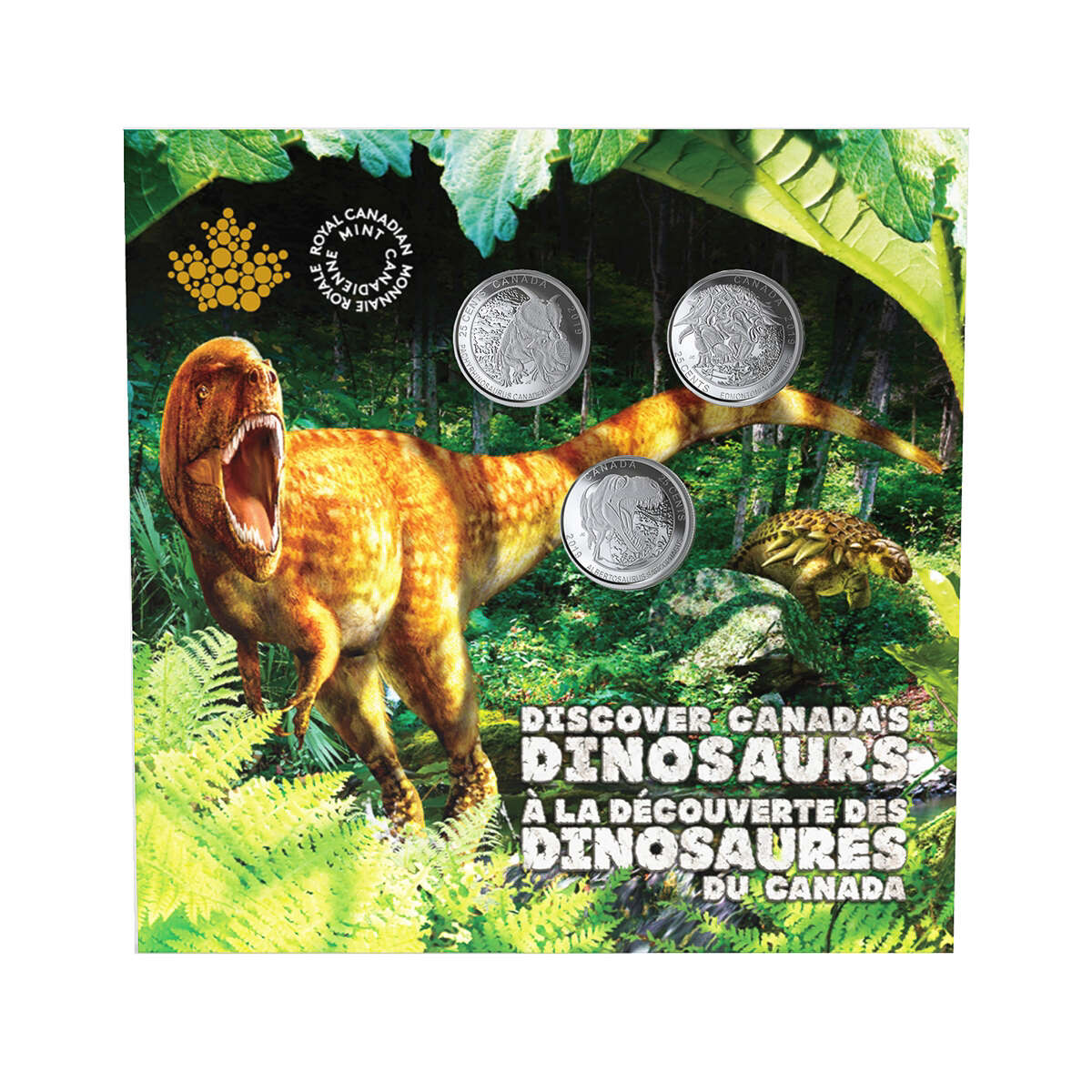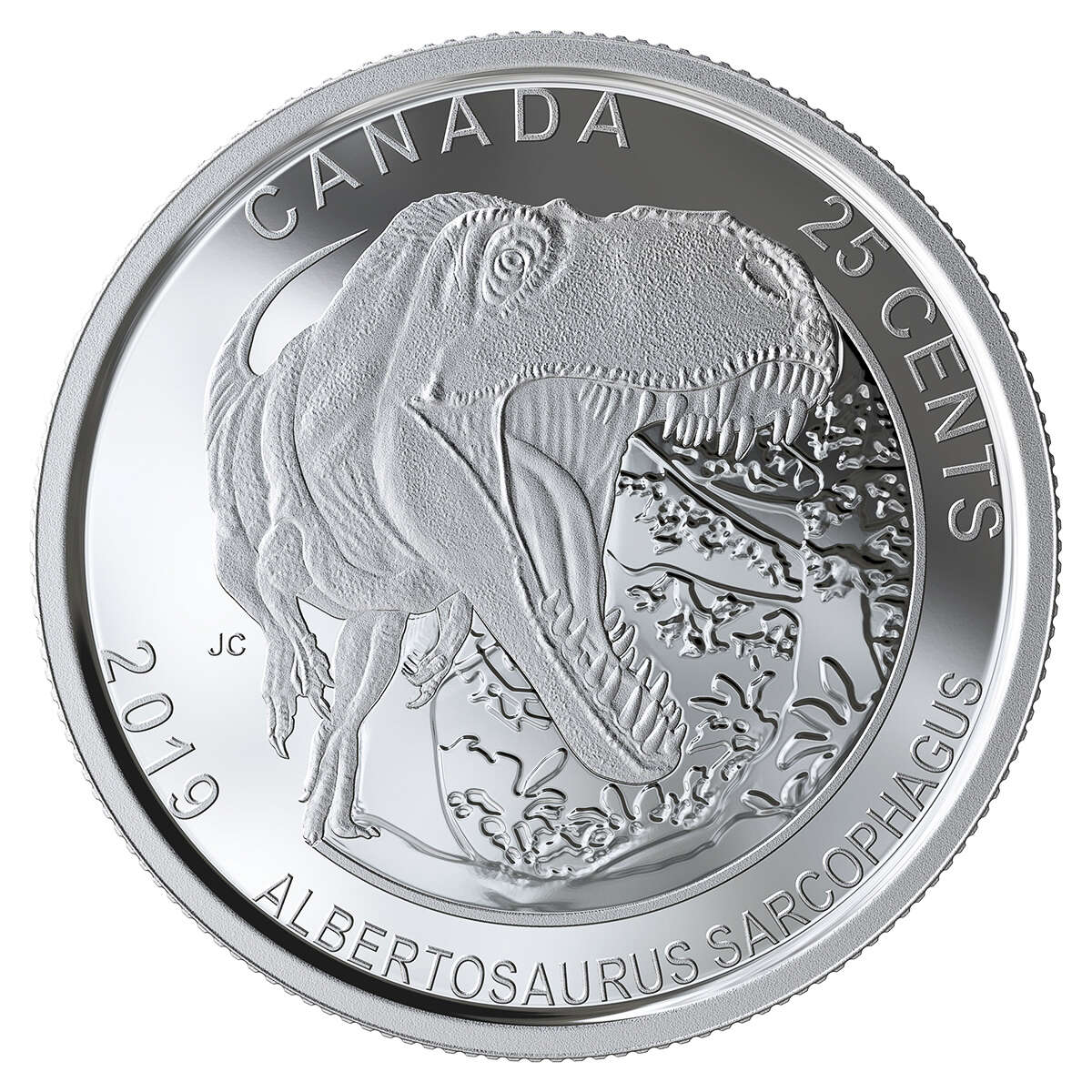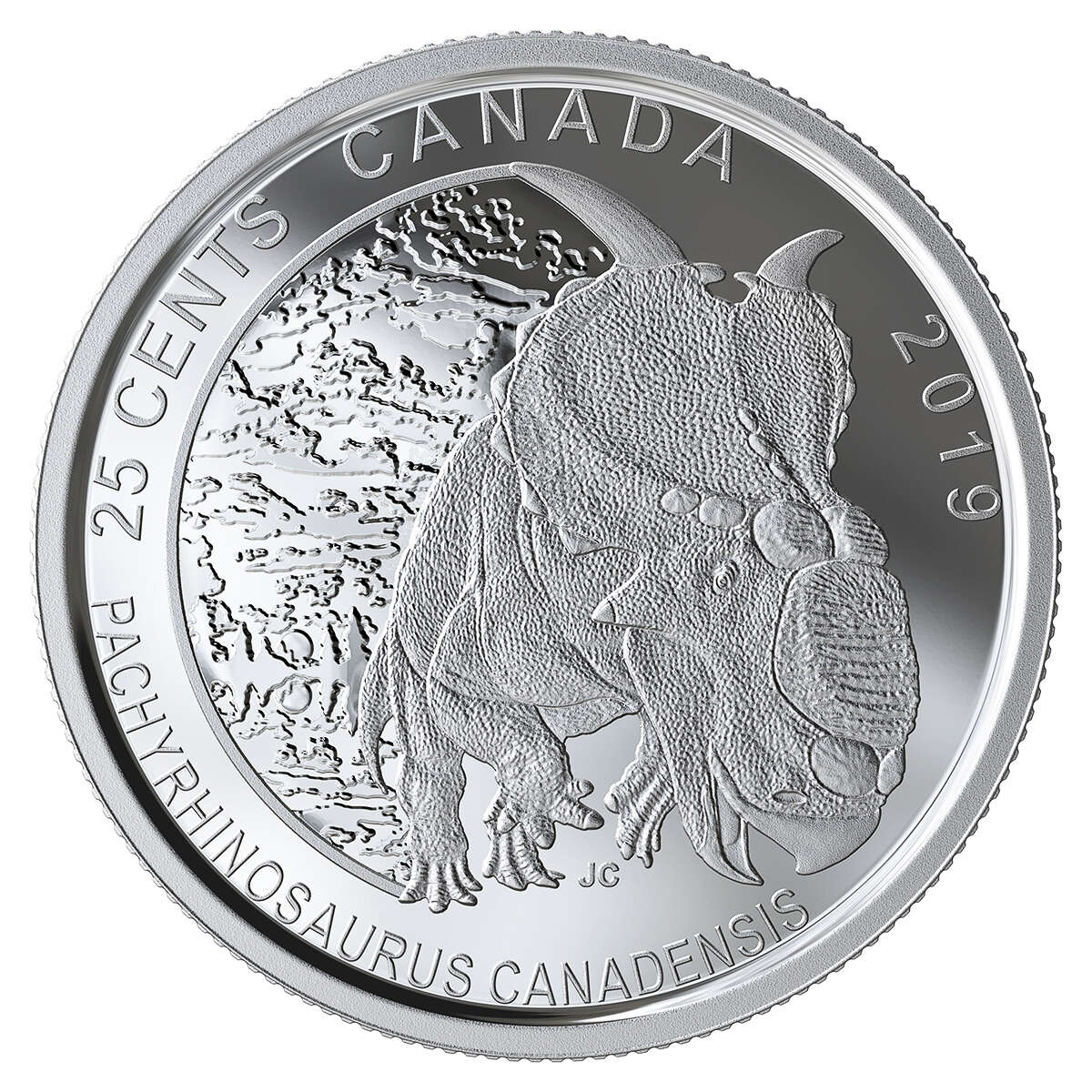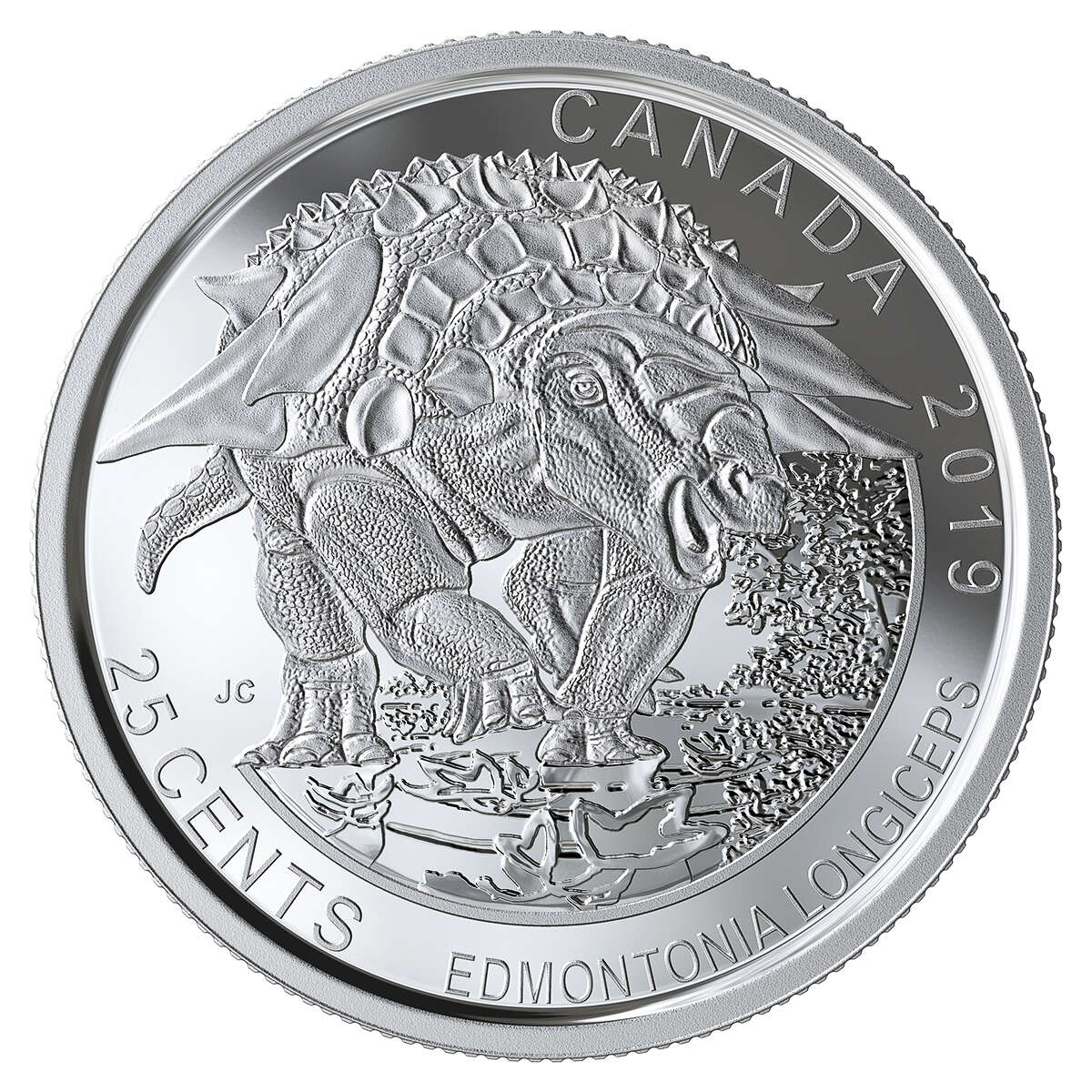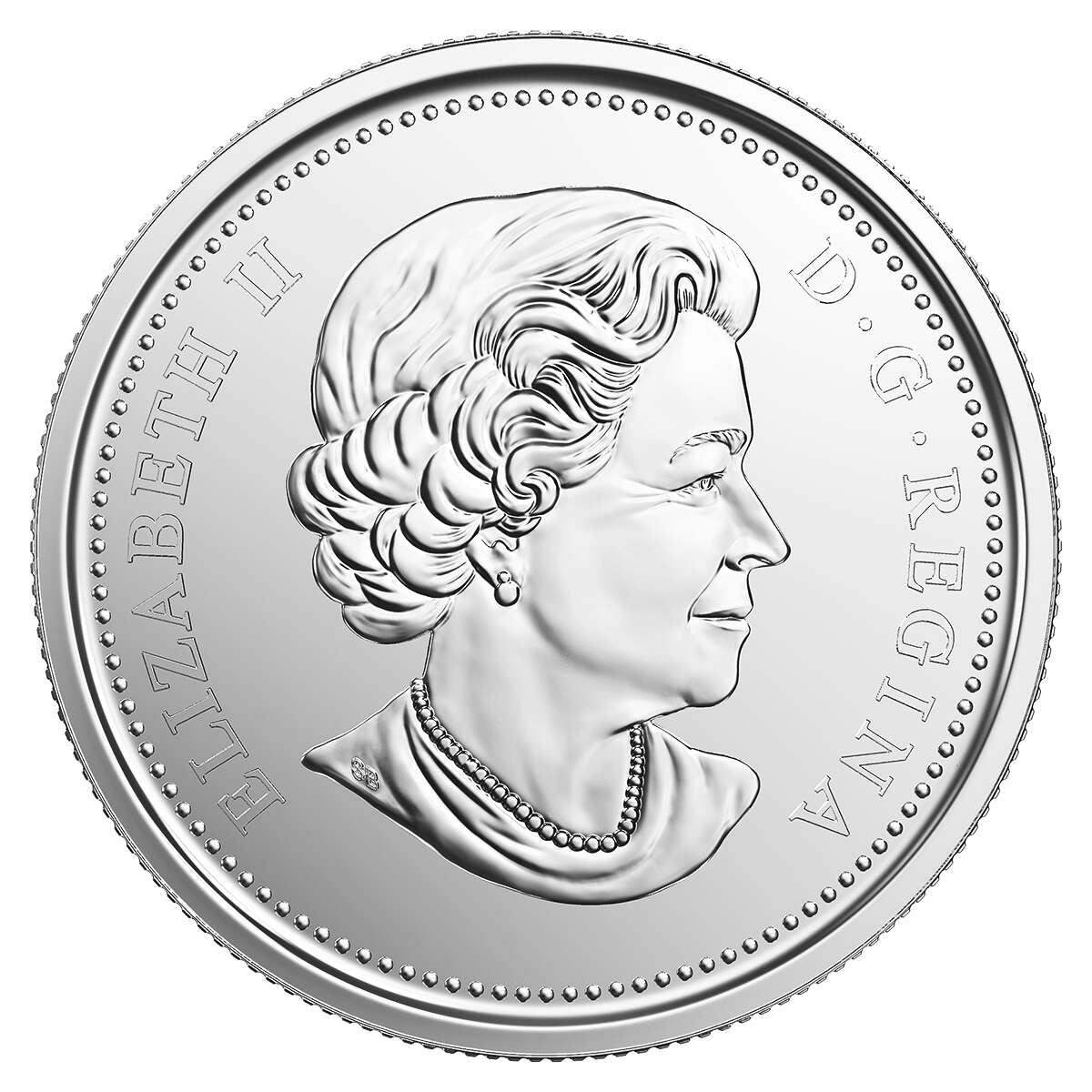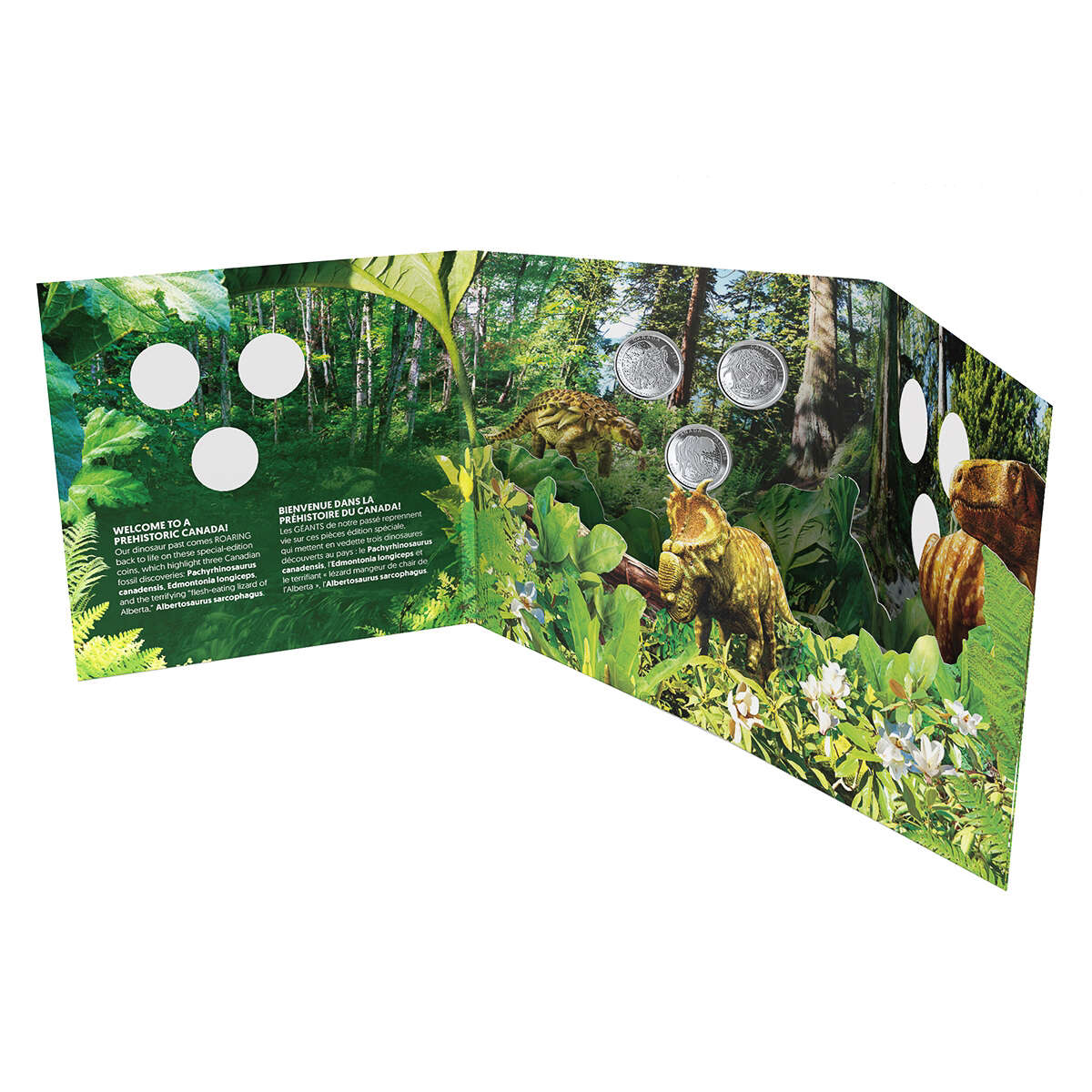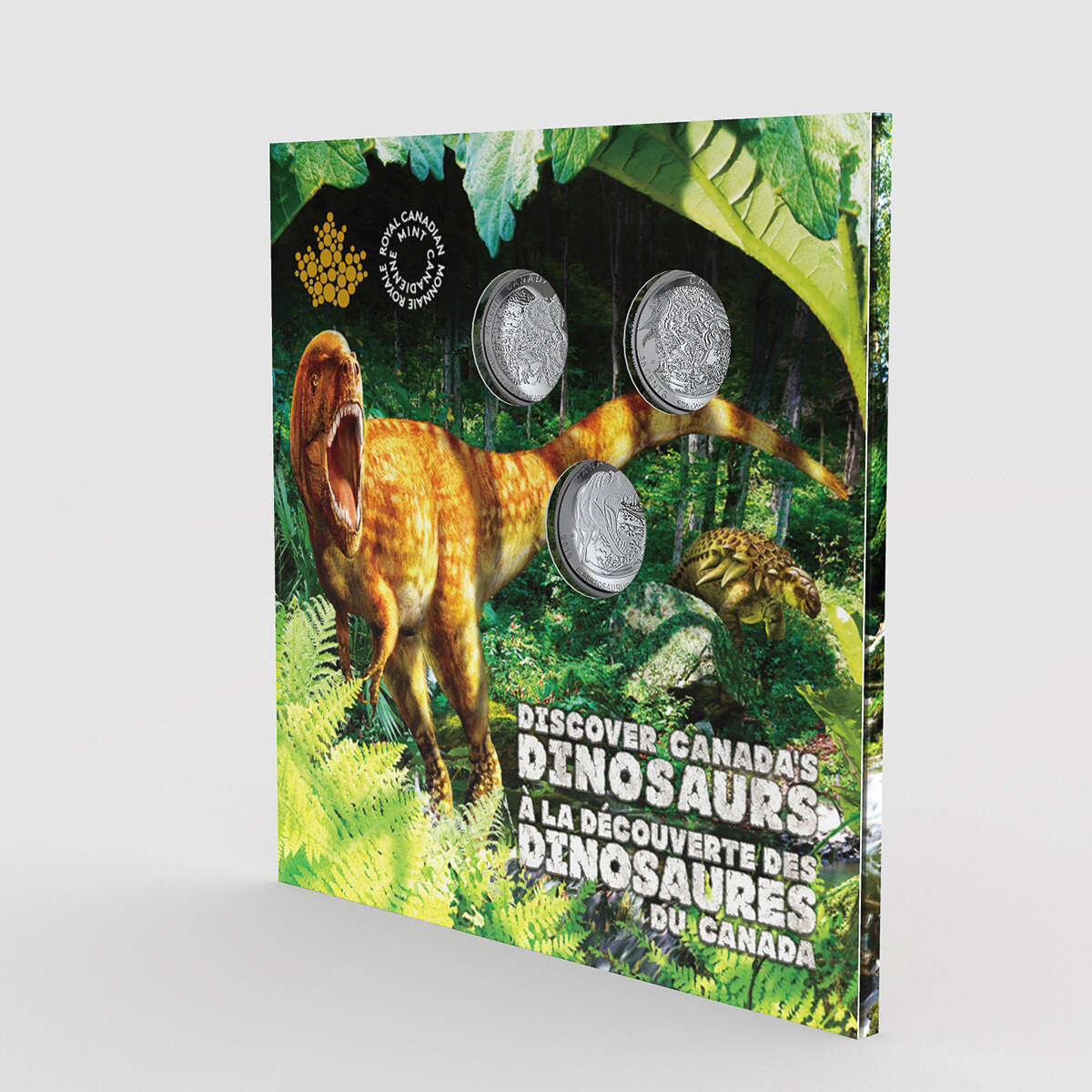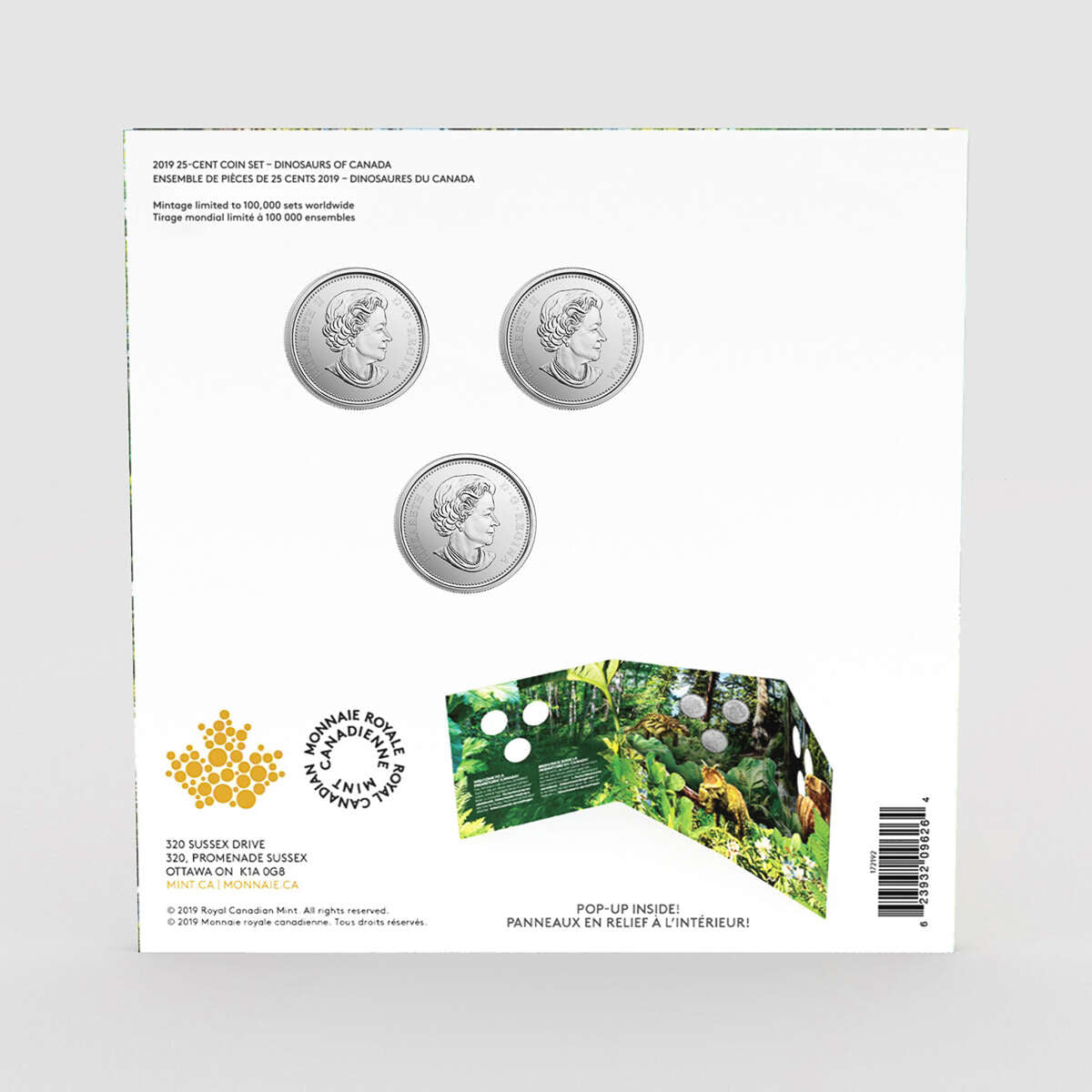Description
Fun, collectible and some of the most affordable coins issued by the Royal Canadian Mint. These special-themed 25 cent coins feature three very different dinosaurs that share a special connection: they’re among the many dinosaur species that were discovered right here in Canada. They’re a part of our history, and the proof is in their “Canadian” names. Imagine seeing a spiky Edmontonia Longiceps moving towards you. Or watching Pachyrhinosaurus Canadensis charge headlong at a rival. Or coming face-to-face with a hungry Albertosaurus Sarcophagus. All three coins are tucked inside a colourful 3D pop-up folder that welcomes you to a Late Cretaceous Canada, home to prehistoric wonders of all shapes and sizes.
Albertosaurus Sarcophagus:
The reverse image by Julius Csotonyi features Albertosaurus Sarcophagus bursting out of a prehistoric forest of Metasequoia conifers and Osmunda-type ferns. This is the dinosaur that put Canada on the palaeontology map in 1884—it was the first meat-eating dinosaur discovered here. The “flesh-eating lizard from Alberta” lived 72-68 million years ago. As the top predator of its time, it was probably terrifying on its own … but imagine having to fight off more than one Albertosaurus — the discovery of at least 12 individuals in one bonebed touched off some debate about possible pack behaviours.
Pachyrhinosaurus Canadensis:
The reverse image by Julius Csotonyi finds Pachyrhinosaurus Canadensis in a lake setting. A member of the Ceratopsidae (horned dinosaur) family, Pachyrhinosaurus canadensis lived 72.2 to 71.2 million years ago. Its genus name may give the impression it is related to the modern-day rhinoceros, but that’s not the case: it just means “thick-nosed lizard.” And given the evidence of broken ribs in some specimens, it seems likely that this herbivore would head-butt its rivals!
Edmontonia Longiceps:
The reverse image by Julius Csotonyi shows Edmontonia Longiceps stepping over Erlingdorfia leaves on the wet ground. This nodosaurid lived 71.5 to 71 million years ago and was named for the Edmonton Formation, now known as the Horseshoe Canyon Formation. Edmontonia longiceps was naturally armoured and likely put up a fight against predators like Albertosaurus. It had forward-pointing spikes on its shoulders, spines on its sides, and keeled plates on its tail and body. Its pear-shaped head inspired its longiceps (“long-headed”) name.
The obverse of all three coins features the effigy of Her Majesty Queen Elizabeth II by Susanna Blunt.
Albertosaurus Sarcophagus:
The reverse image by Julius Csotonyi features Albertosaurus Sarcophagus bursting out of a prehistoric forest of Metasequoia conifers and Osmunda-type ferns. This is the dinosaur that put Canada on the palaeontology map in 1884—it was the first meat-eating dinosaur discovered here. The “flesh-eating lizard from Alberta” lived 72-68 million years ago. As the top predator of its time, it was probably terrifying on its own … but imagine having to fight off more than one Albertosaurus — the discovery of at least 12 individuals in one bonebed touched off some debate about possible pack behaviours.
Pachyrhinosaurus Canadensis:
The reverse image by Julius Csotonyi finds Pachyrhinosaurus Canadensis in a lake setting. A member of the Ceratopsidae (horned dinosaur) family, Pachyrhinosaurus canadensis lived 72.2 to 71.2 million years ago. Its genus name may give the impression it is related to the modern-day rhinoceros, but that’s not the case: it just means “thick-nosed lizard.” And given the evidence of broken ribs in some specimens, it seems likely that this herbivore would head-butt its rivals!
Edmontonia Longiceps:
The reverse image by Julius Csotonyi shows Edmontonia Longiceps stepping over Erlingdorfia leaves on the wet ground. This nodosaurid lived 71.5 to 71 million years ago and was named for the Edmonton Formation, now known as the Horseshoe Canyon Formation. Edmontonia longiceps was naturally armoured and likely put up a fight against predators like Albertosaurus. It had forward-pointing spikes on its shoulders, spines on its sides, and keeled plates on its tail and body. Its pear-shaped head inspired its longiceps (“long-headed”) name.
The obverse of all three coins features the effigy of Her Majesty Queen Elizabeth II by Susanna Blunt.

